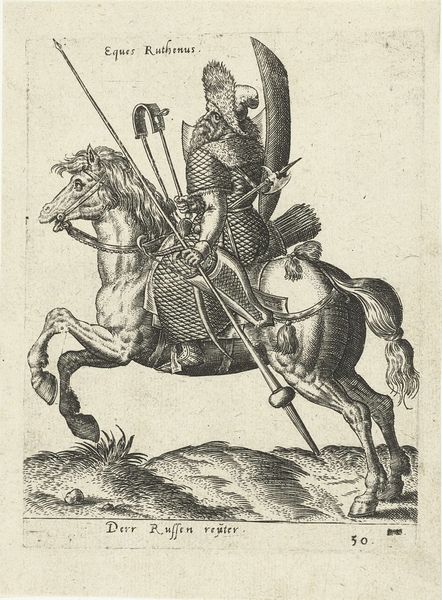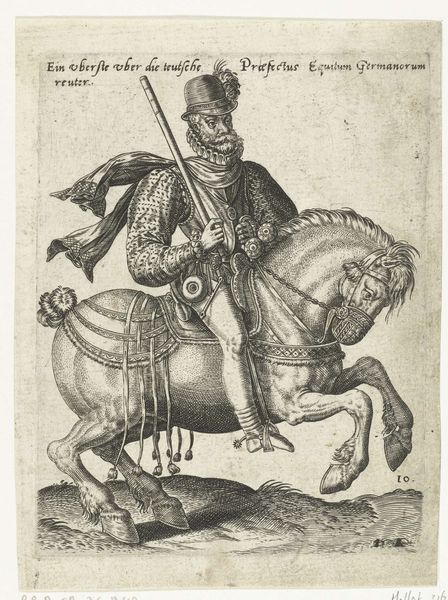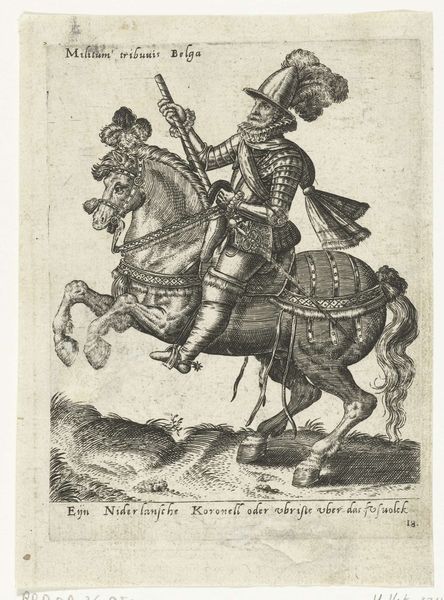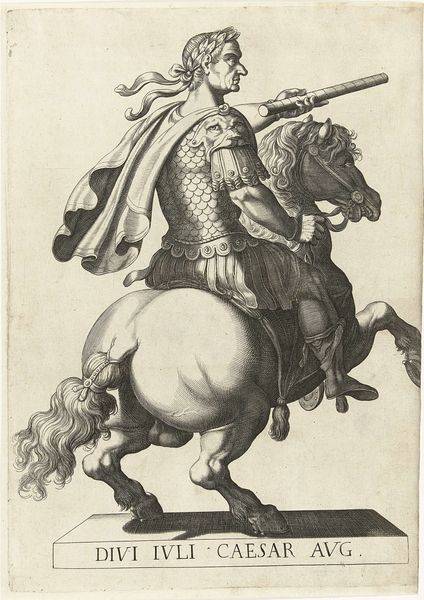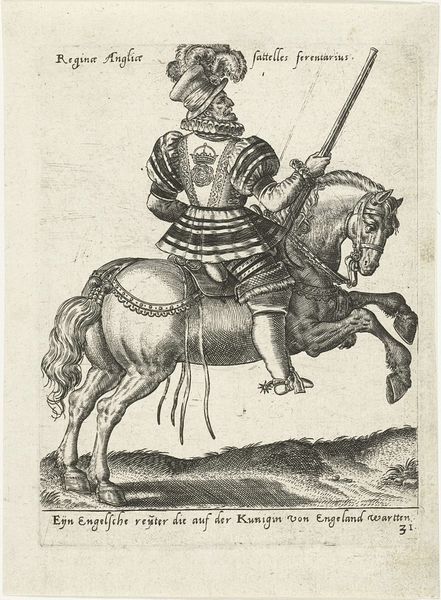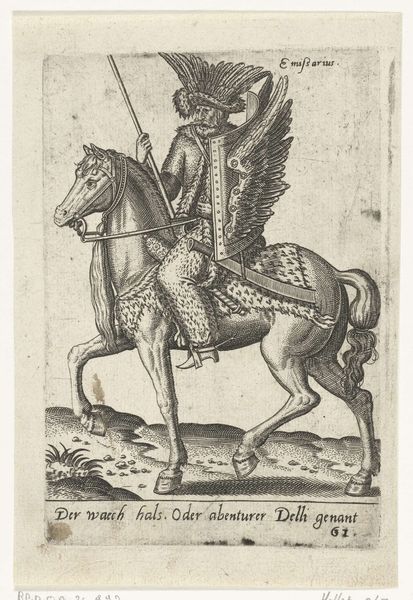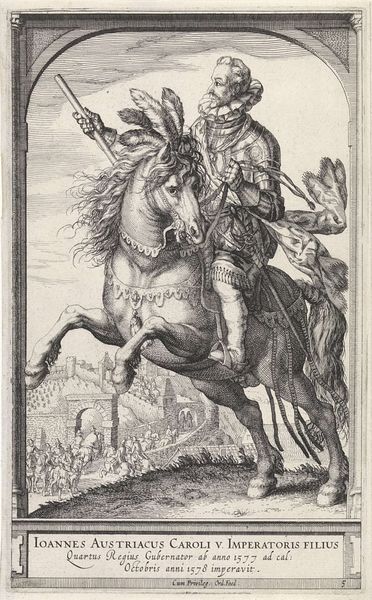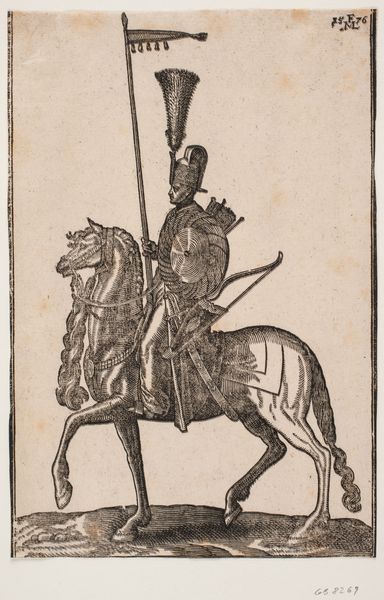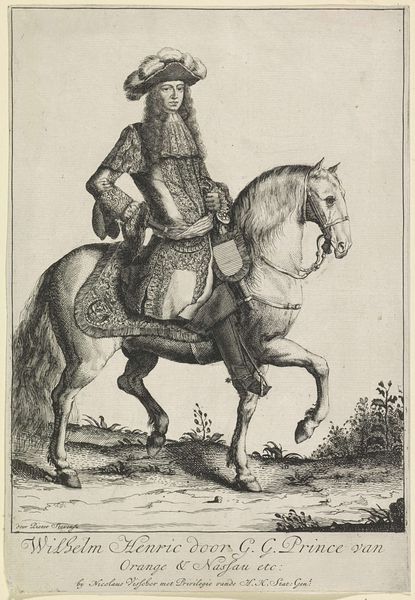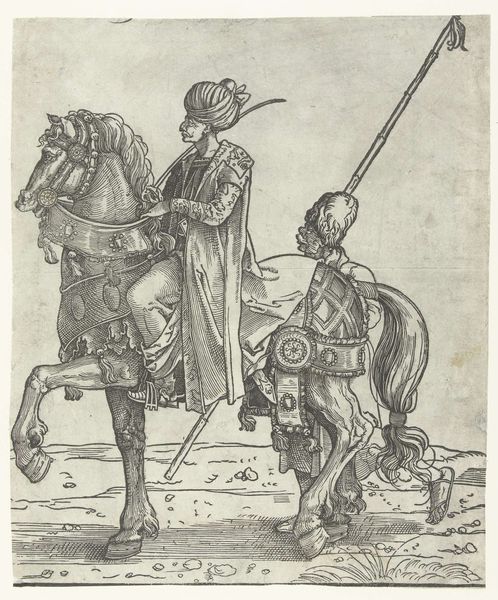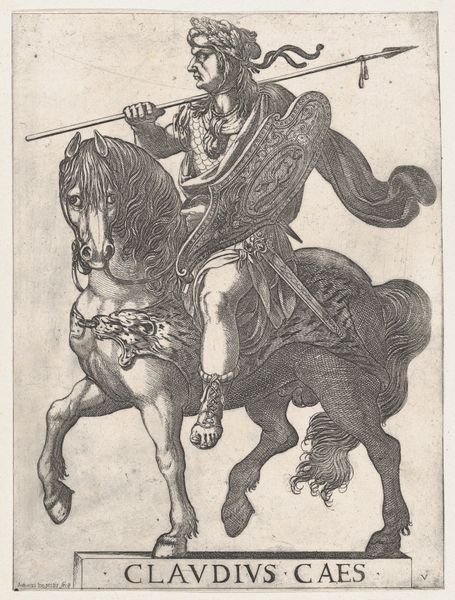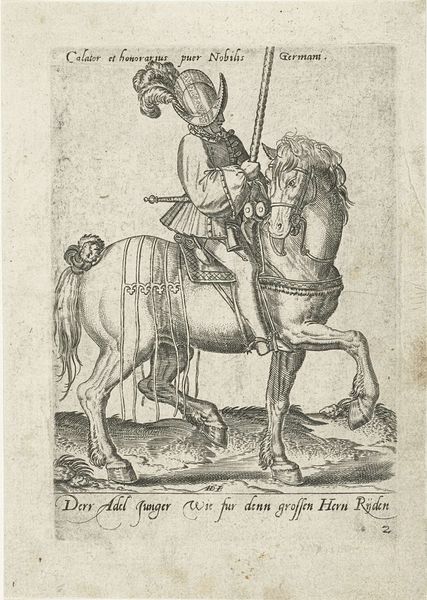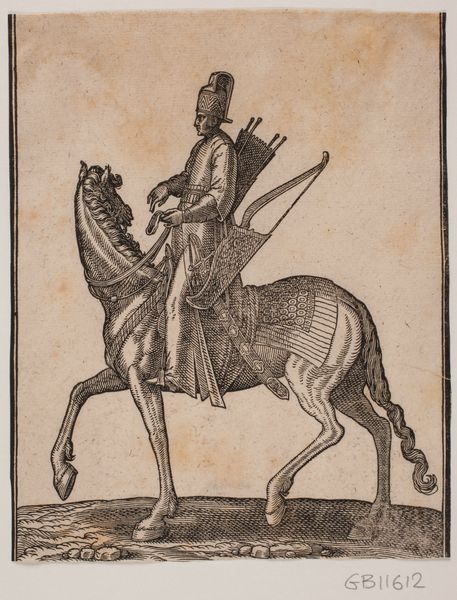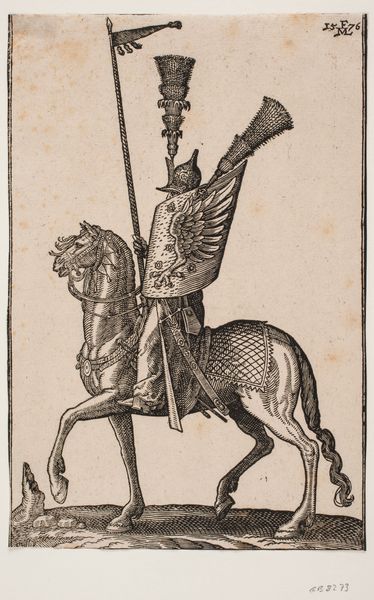
#
pen illustration
#
pen sketch
#
junji ito style
#
cartoon sketch
#
personal sketchbook
#
pen-ink sketch
#
sketchbook drawing
#
storyboard and sketchbook work
#
sketchbook art
#
fantasy sketch
Dimensions: height 381 mm, width 275 mm
Copyright: Rijks Museum: Open Domain
Editor: Here we have Cornelis Anthonisz.’s "Portret van Maarten van Rossum te paard," dating from before 1699, currently held in the Rijksmuseum. It’s a very detailed pen drawing, almost like an illustration from a historical text. The sheer detail in the armour and the horse’s trappings is really striking. What can you tell me about this piece? Curator: I see a detailed study, not just of a man and his horse, but of the material conditions that define his status. Notice the weight of the armor, not just in depiction, but in its implied social burden. It speaks volumes about production, craftsmanship, and the resources poured into militarization and displays of power. How does this conspicuous consumption affect your reading of the portrait? Editor: Well, it makes me think about who *couldn’t* afford such finery. Was the creation of armour a specialised, valued skill at the time? Curator: Precisely! It represents an elaborate production chain and significant capital investment. Think about the labor involved: the mining of ore, the blacksmith's expertise, the engraver's delicate work. Also, consider who benefited from this system, and who was excluded. What societal needs did all this expenditure satisfy? Editor: It highlights the enormous disparity of wealth, doesn’t it? It also implies there was some threat driving demand for armour. The artist has really captured the man's wealth and, actually, the constant preparation for conflict too. Curator: Absolutely. And how do you see this representation shaping public perception of Van Rossum? Does it immortalize him, or subtly critique the power structure? Consider the material reality underpinning even an image like this, as well as who commissioned, created and consumed it, that's the critical context here. Editor: I see how much is communicated through material display, it really provides a historical and cultural insight. Thanks, I hadn’t thought of analysing an image in that way. Curator: It’s about excavating the story embedded within the materials and means of production. I’m glad I could illuminate that approach.
Comments
No comments
Be the first to comment and join the conversation on the ultimate creative platform.
